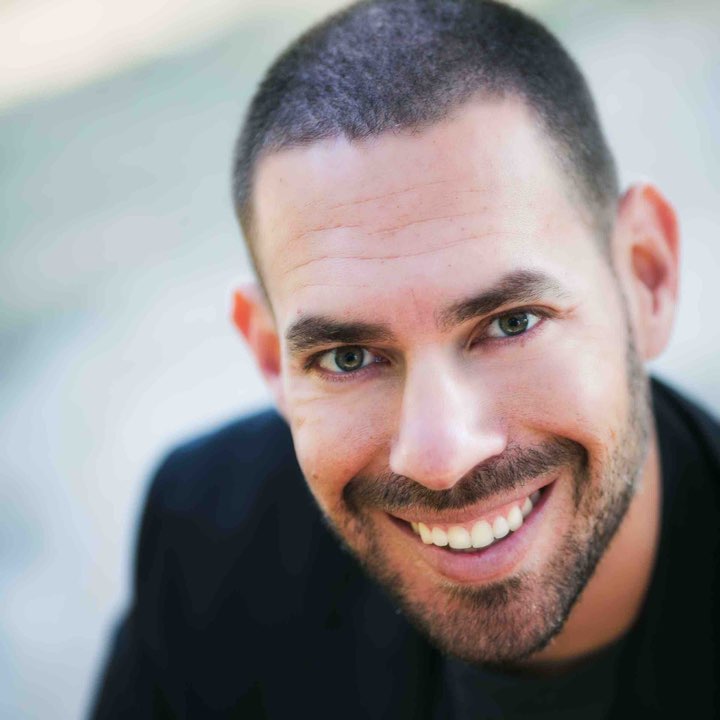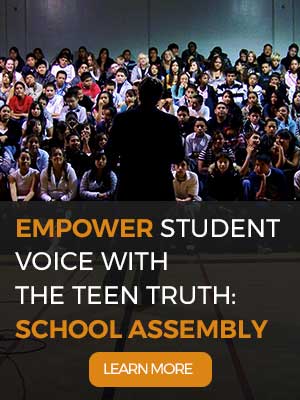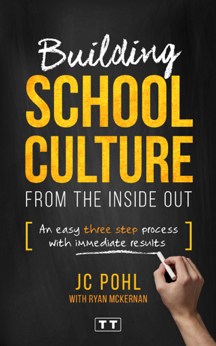We must take action to create peaceful and positive school culture. Here’s how:
The recent school shooting in Parkland, Florida has rocked educators and students across America to their core. Once again, schools are faced with terrifying concerns for safety. We cannot be idle on this matter, so my staff and I have collected some of the best advice we could find on building peaceful school culture.
We came up with 3 critical points to focus on. These points are essential pieces of the puzzle, because schools with positive culture reap several benefits including (but not limited to) fewer incidences of crisis and violence. Although many tragedies are difficult to predict and prevent, we can take steps to improve the emotional and mental well-being of our staff and students. It won’t completely solve this problem, but it’s a start.
Step 1: Learn to Recognize, Prevent, and Intervene in Crises
What will you do if a crisis occurs at your school? How will you intervene? What are you doing to prevent crises? Do you think everyone at your school could recognize a crisis? These are some of the key questions that Stephanie Lerner addresses in her most recent post. This is such an important topic that Stephanie decided to include a free staff presentation on the topic so that each and every member of your staff can take part in crisis prevention and intervention. Remember, if we’re going to make any progress, then we must take on a team mentality. We are stronger together, and when all of us act as one we can have a massive impact!
Step 2: Empower Your Students
Are your students active participants in your school’s culture, or are they bystanders just going with the flow? One of the biggest differences I see between campuses that have strong school culture and campuses that don’t is the degree to which students participate within their school.
When is the last time you asked your students to voice their opinions? When is the last time you assembled your entire school to collaborate and discuss the issues they are facing? Give your students a platform. Offer them an opportunity to speak out. Support their discussion and encourage them to take the lead on activities and events. This has the added benefit of decreasing stress on your faculty members and freeing up valuable time for them to contribute in their most powerful way; teachers and counselors are at their best when they’re interacting and guiding students and they can’t do that if they’re constantly bogged down with little necessities that student leaders could be owning instead. As one of my greatest advisers, Kathleen Bethke taught me, “Never do for students what they can do for themselves.”
School assemblies can be very useful here, but I’ve also seen discussion groups within classrooms ignite powerful feelings of student ownership. The key element to remember here is that your goal is to get students talking. This has been the central focus of our work at TEEN TRUTH, and it has had a massive impact on countless schools.
Step 3: Fearlessly Face Your School’s Own Unique Problems
Of all the steps on this list, this one is by far the most harrowing. In order to face your school’s true problems, you will need to take a fearless and honest look at your school. You’ll also need to gain as many perspectives as possible. Getting all of your student leaders together can be an extremely valuable action. However, many schools lean on their most obvious leaders. Don’t get me wrong, your student council is a fantastic resource, and you should empower them and keep them involved, but what about the leaders and groups that go overlooked?
Could the skateboarders hanging out by the flagpole have some valuable insight on your school’s problem with peer pressure? Could the clique hanging out in the cafeteria corner provide a strong solution for social media skirmishes? In my experience, rebellious students can be a valuable source of creativity if they’re allowed to participate and offered a little bit of guidance and encouragement. Don’t miss out on the contributions they could be making!
If you’re not sure how to get these groups collaborating, consider using our Leadership Summit approach.
I know how difficult things seem right now. My team and I have been fighting this battle since 2006, and each and every tragedy that occurs within our school systems always feels like a punch in the gut. But we can’t give up, and we can’t give in. It might not always feel like it, but you are making a difference. We can create real, positive change in our schools, and we can build a better future. I hope this guide will give you a solid starting point.
Stay strong.

JC Pohl, LMFT-A
President & CEO, TEEN TRUTH
Contact Us
How do you recognize a student leader?
Is it by which conferences they’re invited to?
What t-shirt they wear?
Which elections they’ve won?
Or is student leadership something less easily defined?
At TEEN TRUTH, we help educators redefine student leadership. Student council reps and honors society students are often thrust into the leadership spotlight, but what about that “gang member” on your campus? Could he be leader too? That “mean girl?” She leads every day…what if it were in a productive direction? Or how about that “outcast?” Could that unique voice become one that inspires and motivates others?
Leadership summits are a great way to pull diverse groups of student leaders together, but as I travel the country I find that few schools host annual or semi-annual leadership summits, and those that do only host workshops for students in traditional leadership roles.
By including a diverse group of leaders in our summits, we recognize the leadership potential in a wide array of students, and ignite conversations around social-emotional issues. Students are opened up to the pain and pressures that others face. Strangers soon realize they have more in common than they imagined. School culture efforts are broadened beyond the narrow landscape that traditional leadership programs touch.
The next time you look to recognize leadership, ask yourself, “Do I have leaders from each group in the room? What if I made a seat available for them?” It could be powerful to open up a chair in your summits or weekly student leadership meetings to those non-traditional leaders.
Different voices in the room add depth to your program and your efforts. You might even find that you have a larger buy-in across campus when you run your activities, because a cross-section of credible leaders helped develop the ideas.
To learn more about how to produce leadership summits that work, read my blog at https://teentruth.net/want-leadership-summits-work/

JC Pohl, LMFT-A
President & CEO, TEEN TRUTH
Contact Us
How do you recognize a student leader?
Is it by which conferences they’re invited to?
What t-shirt they wear?
Which elections they’ve won?
Or is student leadership something less easily defined?
At TEEN TRUTH, we help educators redefine student leadership. Student council reps and honors society students are often thrust into the leadership spotlight, but what about that “gang member” on your campus? Could he be leader too? That “mean girl?” She leads every day…what if it were in a productive direction? Or how about that “outcast?” Could that unique voice become one that inspires and motivates others?
Leadership summits are a great way to pull diverse groups of student leaders together, but as I travel the country I find that few schools host annual or semi-annual leadership summits, and those that do only host workshops for students in traditional leadership roles.
By including a diverse group of leaders in our summits, we recognize the leadership potential in a wide array of students, and ignite conversations around social-emotional issues. Students are opened up to the pain and pressures that others face. Strangers soon realize they have more in common than they imagined. School culture efforts are broadened beyond the narrow landscape that traditional leadership programs touch.
The next time you look to recognize leadership, ask yourself, “Do I have leaders from each group in the room? What if I made a seat available for them?” It could be powerful to open up a chair in your summits or weekly student leadership meetings to those non-traditional leaders.
Different voices in the room add depth to your program and your efforts. You might even find that you have a larger buy-in across campus when you run your activities, because a cross-section of credible leaders helped develop the ideas.
To learn more about how to produce leadership summits that work, read my blog at https://teentruth.net/want-leadership-summits-work/

JC Pohl, LMFT-A
President & CEO, TEEN TRUTH
Contact Us
How do you recognize a student leader?
Is it by which conferences they’re invited to?
What t-shirt they wear?
Which elections they’ve won?
Or is student leadership something less easily defined?
At TEEN TRUTH, we help educators redefine student leadership. Student council reps and honors society students are often thrust into the leadership spotlight, but what about that “gang member” on your campus? Could he be leader too? That “mean girl?” She leads every day…what if it were in a productive direction? Or how about that “outcast?” Could that unique voice become one that inspires and motivates others?
Leadership summits are a great way to pull diverse groups of student leaders together, but as I travel the country I find that few schools host annual or semi-annual leadership summits, and those that do only host workshops for students in traditional leadership roles.
By including a diverse group of leaders in our summits, we recognize the leadership potential in a wide array of students, and ignite conversations around social-emotional issues. Students are opened up to the pain and pressures that others face. Strangers soon realize they have more in common than they imagined. School culture efforts are broadened beyond the narrow landscape that traditional leadership programs touch.
The next time you look to recognize leadership, ask yourself, “Do I have leaders from each group in the room? What if I made a seat available for them?” It could be powerful to open up a chair in your summits or weekly student leadership meetings to those non-traditional leaders.
Different voices in the room add depth to your program and your efforts. You might even find that you have a larger buy-in across campus when you run your activities, because a cross-section of credible leaders helped develop the ideas.
To learn more about how to produce leadership summits that work, read my blog at https://teentruth.net/want-leadership-summits-work/

JC Pohl, LMFT-A
President & CEO, TEEN TRUTH





